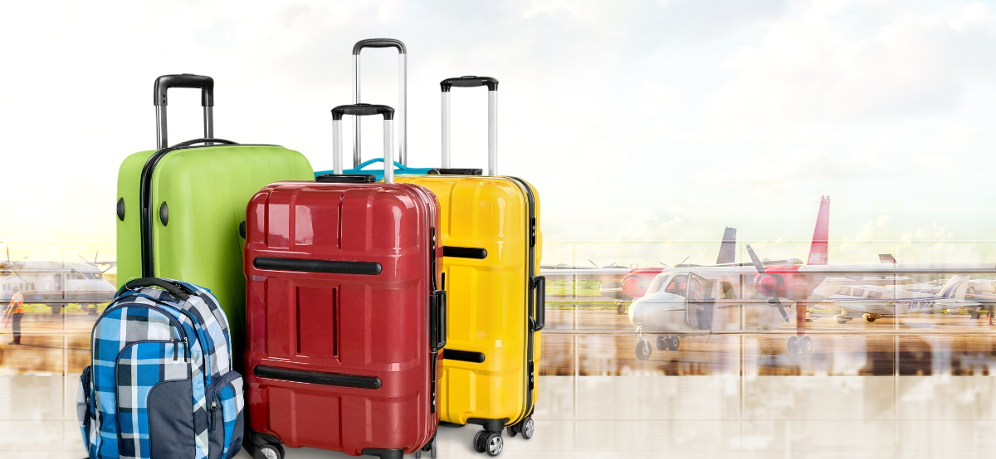
Offering guidance on luggage allowance is easily one of the most complicated tasks for travel agents, irrespective of how much experience an agent has. The truth is that in some cases there’s no simple answer as these rules constantly change. Despite this, travel agents are still expected to advise clients and take on a big risk as clients usually hold the agent liable if anything goes wrong.
To help make this process easier we’ve simplified all you need to know about baggage rules and restrictions.
Hand luggage vs checked luggage
Carry-on, more commonly known as hand luggage, can be carried on-board by the passenger and stored in either the overhead storage bin or underneath a seat. Usually when hand luggage exceeds the maximum weight or size, it has to be checked in and additional charges may apply.
Checked luggage is stored in the airline hold and is closely regulated by the airline. When a traveller exceeds the weight limit, or brings an additional bag, they are often required to pay an additional fee to secure a spot for their bag in the airline hold.
Hand luggage: What to know
When a client travels from South Africa (domestic or international), ACSA regulates the hand luggage. The general rule is that bags are limited to a single bag weighing a maximum of 7 kg with the addition of a slim-line laptop bag being accepted too. Women with small to medium handbags can take them in addition to a 7 kg bag.
Airlines can however further restrict these rules, typically by providing maximum dimensions so that bags can fit in the overhead-storage bins of a specific aircraft. The smaller the aircraft, the more restrictive the rules can be – which is why you should always consult the airline for answers.
When departing from an international airport, it’s best to double check what the country or the airline’s rules are to avoid any unforeseen hiccups. In 2015 IATA released hand luggage recommendations that suggested suitcases may be a maximum of 55 cm long, 35 cm wide and 20 cm deep. However, it’s important to note that each airline is different in terms of rules so never assume.
Also remember to advise your clients that there are rules and restrictions regarding the content of their hand luggage. Among other rules, nothing sharp is allowed and liquids (and container sizes) are restricted to 100 ml.
Checked luggage: What to know
Each airline determines their own checked luggage policy, some even charge additional fees for this. Always check whether baggage is included in the quoted fare on the FlightSiteAgent system as some airlines (European and US low-cost in particular) don’t include baggage and this would then have to be booked and paid separately. By clicking on the ‘Baggage Information’ tab on the search results, you’ll usually find either a number of pieces or specific weight limit assigned to that ticket.
Some airlines use the piece concept (number of bags) while others the weight concept. In recent years, more airlines have moved over to the piece concept.
To advise a client on a straight-forward direct ticket, you’ll usually find a more detailed answer (as opposed to what the FSA system provides) on the airline’s website. Some airlines’ baggage policy depends on the flight route or ticket class, which proves that it is hard to stay on top of simple situations.
Stop-over
When clients are booking flights with a stop-over (think Emirates or BA to Europe with a stop-over in Dubai or London), always advise them to ask whether their bags will be checked through at the check-in desk.
In some cases it might be necessary for the client to collect their bags and check them in themselves for the following flight. Although this is the exception rather than the rule, it can cause great inconvenience to clients as their bags will be left behind.
Multiple carriers
When multiple carriers are involved, the rules become fuzzy. Agents do not know off-hand which airline policy applies, unless they have prior experience with the particular airlines in question.
The only way to be sure about the rules, is to phone the airlines directly. Code-share agreements and airline alliances further complicate the situation, as there might be agreements in place which contradict the IATA rule of the most significant carrier.
Business and First Class Travellers
Generally Economy Class travellers have the most restrictive baggage policy, whereas travellers in higher classes (Premium Economy, Business Class and First Class) are often allowed additional bags or higher.
Baggage Allowance Printed on Tickets
Your baggage allowance will be printed on the ticket once issued and can be viewed on the system before booking as well. It isn’t always as detailed as required, but it will at least state whether the weight or piece concept applies. This should be your departure point after which you can consult the airline’s website to provide further details. Should you find that the two clash, please bear in mind that it could be due to the use of a partner airline or a lower booking class. If you find yourself still uncertain, please contact the airline to clear up any confusion.
Handy links
To avoid frustration and misinforming your clients on NB baggage rules, we’ve compiled a list of valuable links to popular airline websites to share with your clients before they jet off.
- SAA https://bit.ly/2mkRtee
- BA https://bit.ly/2mhlLyb
- Kulula https://bit.ly/1lfOJTv
- Mango https://bit.ly/1OMYqtq
- FlySafair https://bit.ly/2m1KplV
- SA Express https://bit.ly/14xLgz8
- SA Airlink https://bit.ly/2mztQiH
- Emirates https://bit.ly/2iZm405
- Etihad https://bit.ly/2lkYVGN
- Qatar https://bit.ly/1vNhTS3
- Qantas https://bit.ly/2mhkVl2
If you have any further questions, contact [email protected] or call 0860 23 24 25 and one of our friendly account managers will be able to assist.
